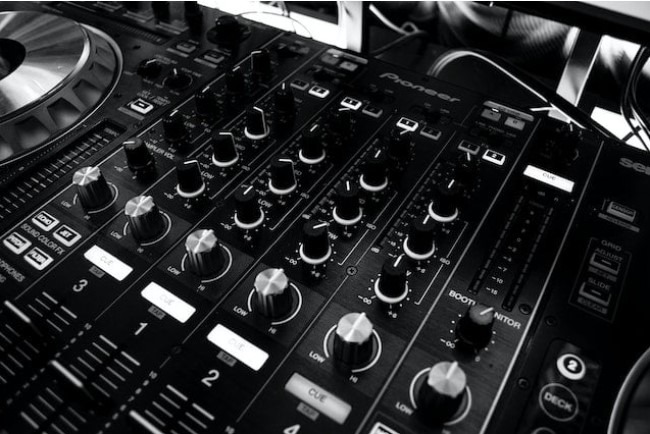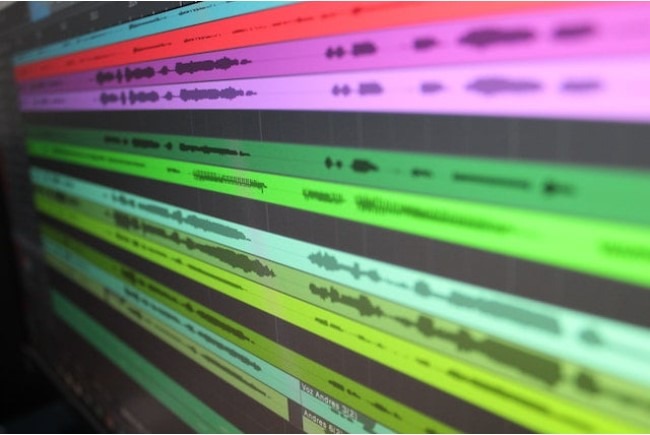
Have you ever felt that when you’re playing your favorite game, you’re completely lost in its world?
I also feel the same and it’s amazing, it’s like you’ve been transported to another dimension.
That’s what gaming is all about, getting an immersive experience and being deeply involved in the game’s universe without caring about anything else.
Whether you’re trying to hear the footsteps of an opponent getting closer or enjoying the epic soundtrack of your favorite game, having good audio quality on your gaming headset is crucial.
In this detailed guide, we’ll discuss some simple and effective ways to improve audio quality on gaming headsets without diving into complicated technical jargon.
So, Let’s dive right in.
Tips To Improve Audio Quality on Gaming Headset
Let’s discuss the simple and useful tips that you may follow to improve the audio quality of your gaming headset
Step 1: Choose the Right Gaming Headsets

The first step to improving your gaming audio experience is to select the right headset.
There are various types of gaming headsets available, including over-ear, on-ear, and in-ear options.
Here are a few things to consider:
- Over-Ear vs. On-Ear:
Over-ear headsets generally provide better sound isolation and a more immersive experience compared to on-ear headsets. - Wired vs. Wireless:
Wired headsets tend to offer lower latency, making them ideal for competitive gaming. However, if you value convenience and freedom of movement, wireless headphones might be your preference. - Comfort:
Comfort is crucial for long gaming sessions. Look for headsets with cushioned ear cups and an adjustable headband for a snug fit.
Step 2: Adjust the EQ Settings

Most gaming headsets come with built-in equalizer (EQ) settings that allow you to adjust the audio to your liking.
EQ settings let you control the balance between bass, mids, and treble.
If you find that certain sounds, like footsteps or gunshots, are hard to hear, you can tweak the EQ settings to make them more prominent.
Here’s a simple way to start:
- Increase the bass if you want more punchy explosions and deep rumbling sounds.
- Boost the mids for clearer voices and instrumentals.
- Adjust the treble for sharper, high-pitched sounds like glass breaking or footsteps.
Experiment with different EQ presets or create your custom settings until you find the perfect balance for your gaming experience.
Step 3: Position Your Microphone Correctly

Many gaming headsets come with a built-in microphone or a detachable one.
The position of the microphone can affect your audio quality, especially when communicating with your team in multiplayer games or streaming.
You can follow these tips to improve the sound coming out of your microphones
- Keep the microphone close to your mouth:
Position the microphone about an inch away from your mouth to ensure clear communication without picking up too much background noise. - Reduce background noise:
If you’re playing in a noisy environment, consider using a pop filter or foam windscreen to minimize background noise and improve the quality of your voice.
Step 4: Use Sound Enhancements

Most gaming systems and PCs come with sound enhancement options that can help improve audio quality.
These enhancements are often easy to access and can make a noticeable difference in your gaming experience.
Here are a few sound enhancement software’s
- Windows Sonic for headsets:
If you’re using Windows 10 or Xbox One, you can enable Windows Sonic for Headsets.
This virtual surround sound technology can enhance the spatial audio in games, making it easier to pinpoint the direction of sounds. - Dolby Atmos:
Some gaming headsets support Dolby Atmos for an even more immersive audio experience. Make sure to enable this feature if your headsets are compatible.
Step 5: Keep Your Gaming Headset Drivers Updated

Just like any other piece of hardware, gaming headsets often receive firmware or driver updates.
These updates can improve audio quality, fix bugs, and add new features.
To ensure you’re getting the best performance from your headsets, check the manufacturer’s website or the headset’s app for any available updates.
Step 6: Optimize Game Settings

In addition to adjusting your headset settings, it’s also important to optimize in-game audio settings.
Many games allow you to customize audio preferences, including volume, sound effects, and dialogue.
Here’s what you can do:
- Check the in-game audio settings:
Navigate to the audio settings within the game and make adjustments according to your preferences.
You can often find options to increase dialogue volume, reduce background music, and adjust overall sound levels. - Enable 3D audio or surround sound:
If the game supports it, enable 3D audio or surround sound for a more immersive experience.
This will help you pinpoint the direction of sounds more accurately.
Step 7: Reduce Ambient Noise

External noise can significantly impact your gaming experience, especially if you’re trying to concentrate on subtle in-game sounds.
Here are some tips to reduce ambient noise:
- Close doors and windows:
Shutting out external noise sources can make a big difference. - Use noise-canceling headsets:
If you have a noisy gaming environment, consider investing in noise-canceling headsets.
These headsets use technology to block out unwanted background noise, allowing you to focus on the game. - Soundproof your gaming space:
If you’re serious about creating a quiet gaming environment, you can soundproof your gaming space with foam panels or curtains to absorb or block external sounds.
Step 9: Consider an External DAC/Amp

For those who want to take their audio quality to the next level, consider using an external Digital-to-Analog Converter (DAC) and amplifier (amp).
These devices can improve the clarity and power of your headset’s sound, especially if your gaming setup involves a PC or a gaming console.
- DAC:
A DAC converts digital audio signals into analog signals that your headsets can play. This can result in clearer audio with less distortion. - Amp:
An amplifier boosts the audio signal, providing more power to your headsets.
This can be particularly useful for high-impedance headsets, which require more power to perform at their best.
Regularly Maintain Your Gaming Headsets For Good Lifespan

Proper maintenance can go a long way in preserving the audio quality of your gaming headsets.
Here are some simple steps to keep them in tip-top shape:
- Clean your headsets:
Dust and debris can accumulate on your headsets over time, affecting sound quality. Use a soft brush or cloth to gently clean the ear cups and headband. - Store them properly:
When you’re not using your headsets, store them in a cool, dry place and avoid placing heavy objects on top of them. - Replace ear cushions:
If the ear cushions on your headsets start to wear out, consider replacing them. Worn-out cushions can negatively impact comfort and sound isolation.
Conclusion
Improving audio quality on gaming headsets doesn’t have to be a super difficult task.
You can try these simple and practical tips to enhance your gaming experience and immerse yourself in the world of your favorite games.
Ensure to choose the right headsets, adjust settings to your preference, and maintain your gear to ensure long-lasting audio excellence.
Please share your valuable feedback in the comments and share any additional tips for improvement of your audio quality.
Happy gaming!! 🙂
Frequently Asked Questions
My headset mic sounds muffled. How can I improve voice clarity?
Try a pop filter or windscreen, adjust the mic position closer to your mouth, and disable background noise reduction in settings.
Are wireless headsets good for competitive gaming?
Yes, but prioritize low-latency options. Wired headsets may still offer an edge.
I mainly play story-driven games. What EQ settings should I use?
Focus on boosting mids for clear dialogue and instrumentals, and adjust treble for subtle environmental cues.
My headset software feels confusing. Are there simpler audio enhancement options?
Yes; Windows Sonic for Headsets and Dolby Atmos offer virtual surround sound without complex configurations.
Can I improve audio quality with old, low-budget headsets?
Some tweaks like optimizing in-game settings and reducing ambient noise can help, but consider upgrading for a significant improvement.
Are external DACs and amps worth it?
For audiophile gamers or those with high-impedance headsets, yes! They can significantly enhance clarity and power.
My game doesn’t have in-game audio options. What can I do?
Check system-wide audio settings for sound enhancements or virtual surround options that might improve overall sound.
Also Read….
- Why Are Gaming Headsets So Big? [13 Reasons]
- Are Gaming Headphones Good for Calls [2024]
- How Do Gaming Headsets Work? [2024]
- How To Set Up Gaming Headphones Like a Pro
- What to Look for in a Gaming Headset [Buying Guide 2024]
- Virtual Surround Sound In Gaming Headphones Explained
- Gaming Headsets Vs Regular Headsets: Which Should You Choose?
- How To Fix Common Problems With Gaming Headphones
- How to Clean and Maintain Your Gaming Headset [2024]
- How to Choose Best Gaming Headset for Streaming [2024]
Hi, I’m Vishal, founder of Gaming Bar, your ultimate hub for gaming and tech gear. I am passionate and dedicated to improving your gaming experience and providing honest reviews about gaming and tech products. You’ll find plenty of honest, unbiased reviews, buying guides, and expert opinions presented in an engaging manner. All I ask is that you share my blog posts and support me.
